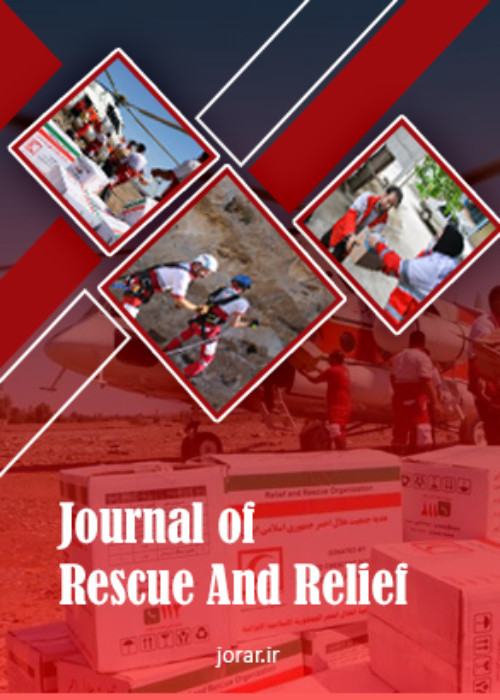Relief routing after an earthquake (case study: part of the district of Tehran city)
Author(s):
Article Type:
Research/Original Article (دارای رتبه معتبر)
Abstract:
Background
Earthquake as one of the most important natural disasters always in short time entails irreparable damage to human settlements. In the aftermath of the earthquake, different types of crises are created which one of them are the life detecting and rescue and relief to the affected areas. In the initial moments after the earthquake, allocating relief forces and facilities to the affected areas is very important. According to the researches, time is a critical factor in reducing casualties and victims after an earthquake, so that the first 24 hours after the earthquake is the golden opportunity to help the injured, because at these times the victims are most likely to survive.Therefore, the optimal allocation of relief and rescue teams to the affected areas is of great importance.
Method
In this research, the nearest relief base to the affected area were selected firstly in order to determine the relief routing to the affected area then with the help of the relevant experts four paths selected with the highest desirability. In the next step, the routes should be prioritize and optimize based on the desired parameters. The study of the desirability of the routes based on the parameters such as width, length, type and traffic of streets, the use of parcels, the number of floors as well as the type of skeleton of existing buildings in each street were investigated. Each of the criteria and sub-criteria was weighed using the Analytical Hierarchy Process (AHP) process, GIS and available software. Eventually, the final weight of the routes was determined based on the values of their parameters and their sub-criteria, and priority was given to the paths according to these values.
Findings
The results show that the building skeleton (materials) with the weight of 0/325 is the most important factor and the parameters such as number of floors, traffic, route width, route type, route length and existing use in the route with weight 0/320, 0/175, 0/071, 0/045, 0/041, 0/023 are ranked after this parameter in terms of priority and value respectively.
Conclusion
Considering the values obtained for each of the parameters, it is necessary to use resistant materials such as concrete and metal in construction in order to prevent further damage after an earthquake. Also all safety and construction standards should be observed.Keywords:
Language:
Persian
Published:
Scientific Journal of Rescue Relief, Volume:10 Issue: 1, 2018
Pages:
1 to 17
magiran.com/p1944504
دانلود و مطالعه متن این مقاله با یکی از روشهای زیر امکان پذیر است:
اشتراک شخصی
با عضویت و پرداخت آنلاین حق اشتراک یکساله به مبلغ 1,390,000ريال میتوانید 70 عنوان مطلب دانلود کنید!
اشتراک سازمانی
به کتابخانه دانشگاه یا محل کار خود پیشنهاد کنید تا اشتراک سازمانی این پایگاه را برای دسترسی نامحدود همه کاربران به متن مطالب تهیه نمایند!
توجه!
- حق عضویت دریافتی صرف حمایت از نشریات عضو و نگهداری، تکمیل و توسعه مگیران میشود.
- پرداخت حق اشتراک و دانلود مقالات اجازه بازنشر آن در سایر رسانههای چاپی و دیجیتال را به کاربر نمیدهد.
In order to view content subscription is required
Personal subscription
Subscribe magiran.com for 70 € euros via PayPal and download 70 articles during a year.
Organization subscription
Please contact us to subscribe your university or library for unlimited access!


